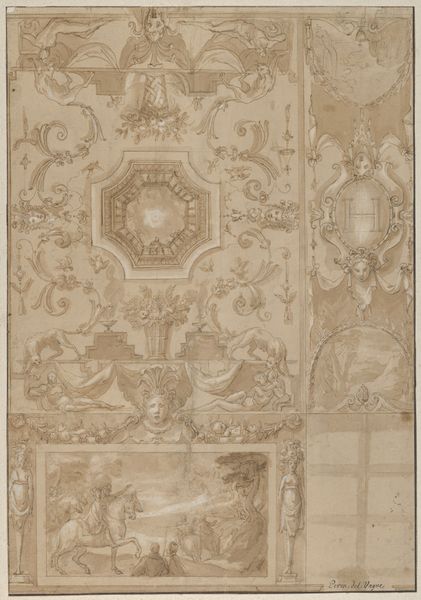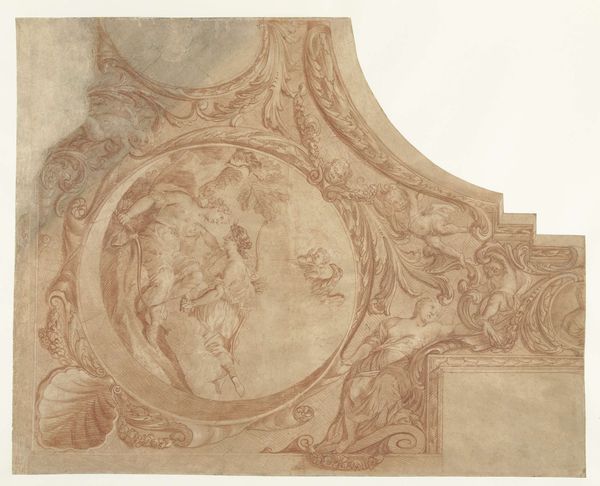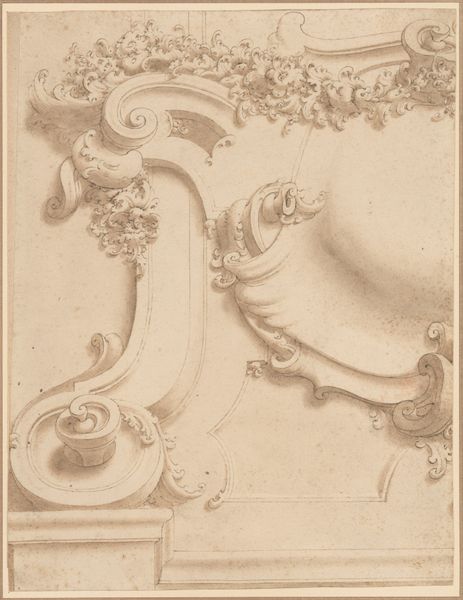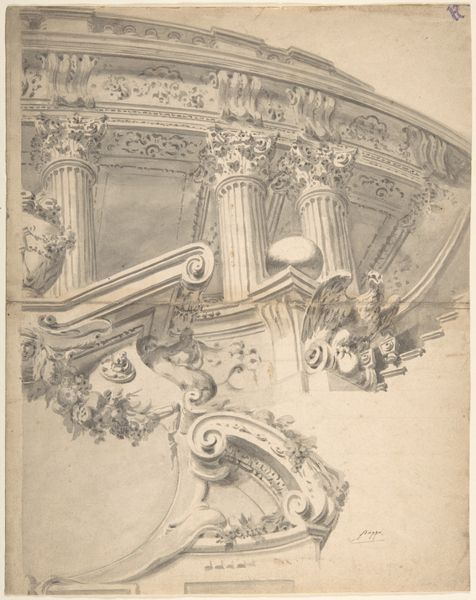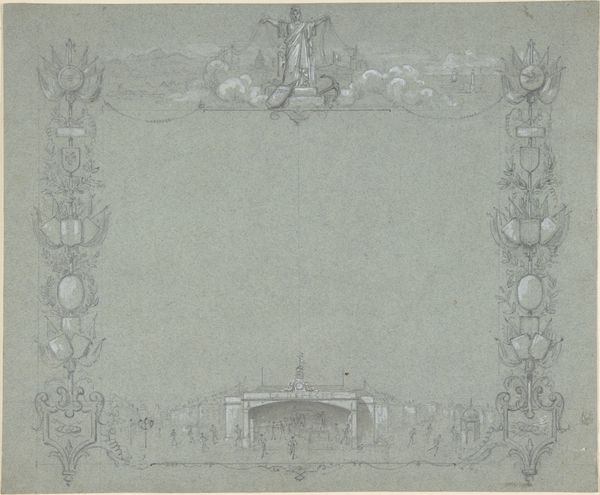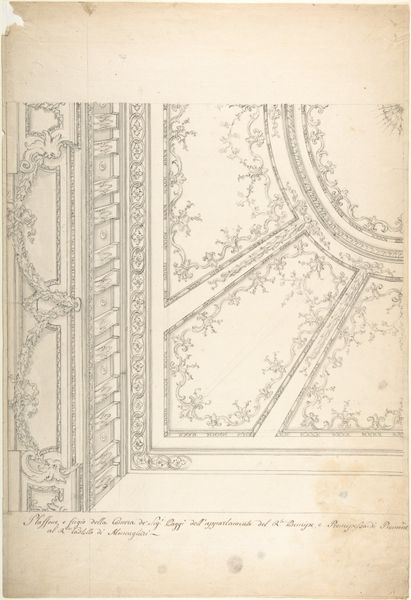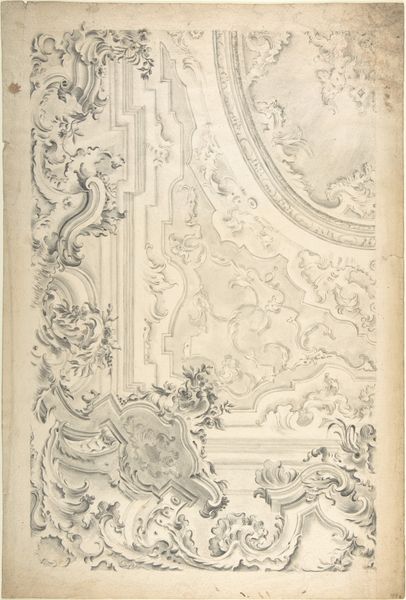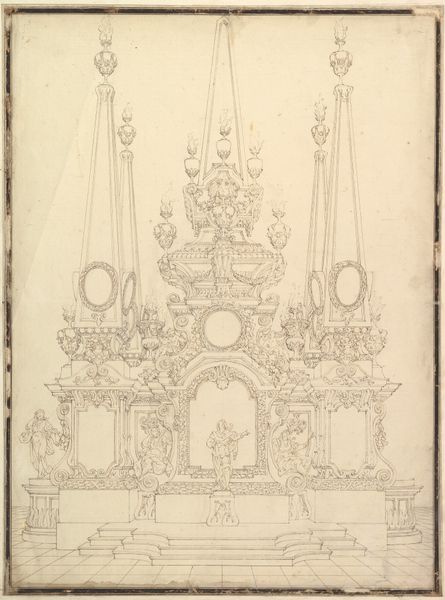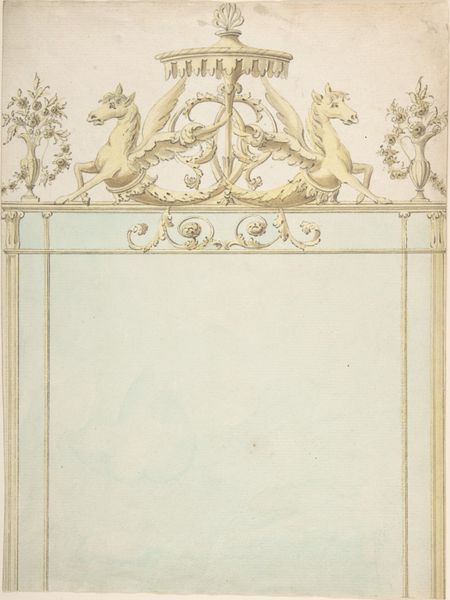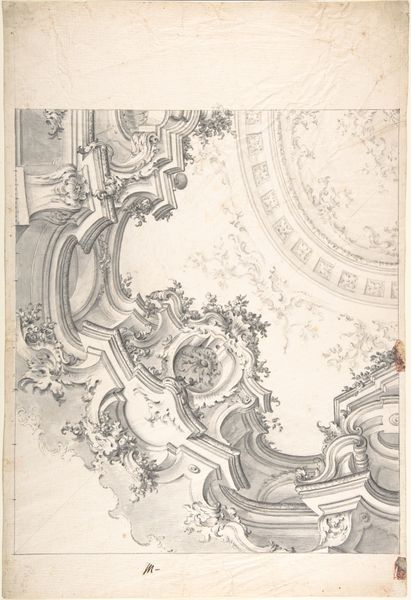
Ceiling Design with the Presentation in the Temple 1647 - 1726
0:00
0:00
drawing, print
#
drawing
#
baroque
# print
#
men
#
history-painting
#
virgin-mary
Dimensions: 20-3/4 x 16-1/4 in. (52.7 x 41.3 cm)
Copyright: Public Domain
Editor: Here we have Gregorio de' Ferrari's "Ceiling Design with the Presentation in the Temple," dating from around 1647-1726. It's a drawing, likely intended for a print. I'm struck by how the weight of the architecture seems to be pushing down on the figures above, even though the light palette gives it an airy quality. What’s your interpretation of this work? Curator: It's interesting that you note that tension. I see this drawing as more than just a design for a ceiling. Considering the period, Baroque, and the subject, the Presentation in the Temple, it prompts questions about power and social hierarchies. Editor: How so? Curator: Well, think about the context. The Baroque era was marked by intense religious and political maneuvering. The Church used art to reinforce its authority and inspire awe. How might this depiction of the Virgin Mary and the infant Jesus being presented in the Temple reflect that dynamic? Are they figures of divine power, or are they subject to the earthly power represented by the Temple? Editor: That's a good point. I was focused on the composition, but considering the socio-political elements... I guess I assumed the religious figures held all the power. Curator: Exactly. The positioning of the figures *within* this grand, ornate architectural space makes me wonder if the architecture represents not just a temple, but the institution and its constraints and power. Think about how the female body, Mary, is positioned. Does the artwork reinforce patriarchal structures, or is it, in its own way, questioning them? The very act of presentation implies submission to ritual and order, no? Editor: I hadn’t considered the inherent power dynamics embedded in that act. Now I'm thinking about the role of women, religion, and power in 17th-century Italy. It definitely adds another layer. Curator: It does. This drawing becomes less about aesthetic beauty, and more about understanding the complex web of social and cultural forces that shaped its creation. I’m left wondering who the print was for, and what role they played in reinforcing, or resisting, those power structures.
Comments
No comments
Be the first to comment and join the conversation on the ultimate creative platform.
